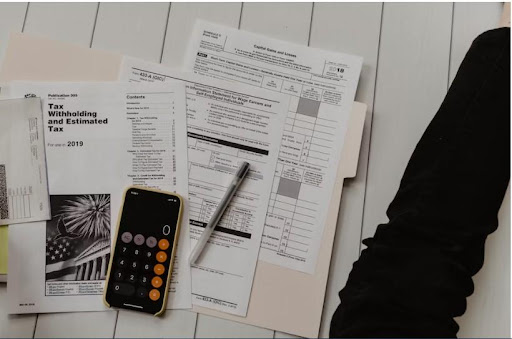Understanding Provisions in Accounting: A Comprehensive Guide

Contents
What Are Provisions in Accounting?
Operating a business successfully is not an easy task. Oftentimes, the business operator will have to adopt a raft of accounting measures to keep the business afloat. Provisions in accounting are one of the various accounting concepts business owners can leverage to ensure optimal performance.
So what is a provision in accounting? Why are provisions important? What are tax provisions? What is the accounting entry for provision? What are the requirements for creating provisions? This post seeks to do justice to all these questions and more.
What is a Provision in Accounting?

A provision in accounting is an estimated fund that a company sets aside to cover specific probable future expenses. An example of a provision in accounting is an estimated sum set aside for the anticipated loss in the value of an asset due to depreciation. Provisions in accounting are defined in the IFRS IAS 37: Provisions, Contingent Liabilities, and Contingent Assets as liabilities of uncertain amounts or time frame.
Provision in accounting estimates are not fixed but are subject to change. According to paragraph 59 of the IAS 37:
“Provisions shall be reviewed at the end of each reporting period and adjusted to reflect the current best estimate. If it is no longer probable that an outflow of resources embodying economic benefits will be required to settle the obligation, the provision shall be reversed.”
The IFRS regards a provision as a liability while the GAAP sees it as an expense.
Types of Provisions in Accounting
There are a variety of provisions in accounting that companies can leverage to cover many anticipated future expenses. Here are some examples:
Tax Payments
A tax provision is the cash a business sets aside to pay for its estimated future income tax obligations.
Bad Debt
A bad debt provision in accounting is an estimate of the amount of accounts receivable that may not be collected. Bad debt ranks as one of the most common types of accounting provisions. Companies typically estimate this amount based on past accounting periods or industry averages.
Loan Losses
Lenders such as banks and others may create loan loss provisions for possible toxic loan principals and payments. Apart from loan defaults, loan loss provisions can cover a number of other areas such as bankruptcies, and renegotiated loans with a possibility of lower payments than originally estimated.
Guarantees
A guarantee is a situation where one company takes responsibility for the financial debt of another company that cannot settle its debt liabilities. A business may become involved in such a guarantee if it has a vested interest in the success of the business it is guaranteeing.
Pensions
Pension provisions are created by companies that offer pensions to their retired workers.
Asset Impairments
Asset impairments occur when the current market value of a company’s asset becomes lower than the carrying value recorded on the company’s balance sheet. Recording the impairment as a provision ensures that an overstatement of the asset’s value does not arise.
Warranties
Warranties are a feature of many company products. These companies need to set aside funds for repairs and replacements, based on estimates of products that may require warranty service.
Obsolete Inventory
Provisions in accounting can help businesses prepare for any revenue losses due to obsolete or unsold inventory.
Restructuring
A business can restructure to improve its long-term profitability. However, such restructuring may have significant short-term costs. Restructuring provisions are meant to address probable direct costs of reorganization, for example, consulting fees, facility closure expenses, and employee termination costs, among others.
Severance Payments
Severance provisions are used by employers to take care of the severance payments of staff who are laid off or quit their jobs for some other reasons.
Depreciation
In accounting, depreciation (mentioned earlier) is a concept that is used to take note of the decline in the value of an asset over time. A depreciation provision seeks to cover any decline in an asset’s value during an accounting period.
Provisions in Accounting Explained

How do provisions in accounting work? Sometimes, companies realize there’s a likelihood they’ll encounter unavoidable future costs, albeit they may not precisely know the size of those costs or when they’ll have to be paid. Provisions in accounting help such businesses plan for these future expenses by setting aside some funds in advance. Companies often study historical data to help them estimate how much to set aside as provisions. They often rely on past experiences, recent financial statements, or industry averages to estimate the size of the provision
For instance, a company may use its past tax average to estimate how much to set aside for future tax payments. So what is the accounting entry for provision? For the tax example above, the provision is recorded as current liabilities on the company’s balance sheet and within the appropriate expense category on its income statement.
Why Are Provisions Important?
Incorporating provisions in accounting into their budget helps businesses to have a more accurate or realistic opinion of their likely financial position. This helps them to come up with better business decisions while providing shareholders with a clearer idea of what their company’s finances will look like.
For instance, a business that offers product warranties understands through historical data that it is likely to incur repair or replacement costs for some of the products sold in a particular period. By estimating a provision for those costs during the same period it sells the products, the business will be in a better position to match its expenses and revenue more accurately for the period, and thus have a clearer idea of profitability.
How to Recognize Provisions in Accounting
To recognize a provision in accounting, a company must comply with the following conditions of the IFRS IAS 37 standard:
- The company must be faced with a current obligation due to a past event.
- It is expected that settling the obligation will result in an outflow of funds or some other economic effects, e.g., a loss in value.
- The obligation amount can be reliably estimated by the company
If a question about recognizing a provision arises, a business should determine whether there’s a way it can take future actions to guard against the financial obligation. If there’s a way, then the provision may not be necessary. If there’s no way, there will be a need for a provision.
Requirements for Creating Provisions
It is not all probable future expenses that will qualify as provisions. The following are some of the considerations that help determine whether a potential future financial obligation qualifies as a provision.
- If the obligation will likely reduce the company’s economic resources or financial position.
- The definition of “likely” is dependent on the accounting guidelines in focus. Under IFRS international accounting standards, an obligation is considered a provision if it’s more than 50% likely to bring about an outflow of cash or other economic resources. In the U.S. Generally Accepted Accounting Principles (GAAP) guidelines, this figure is often closer to 75%. One example that typically satisfies both the IFRS and GAAP thresholds is income tax provisions because it’s very likely that companies will actually have to pay income taxes on their profits.
- The obligation must arise from an event that results in a legal or constructive liability and should reflect the period during which the company is liable. In some cases, there may be a need for companies to make provisions for financial impacts that can occur over several years. For instance, say a vehicle brand offers a warranty covering their vehicle’s first three years or 28,000 miles, and the vehicle malfunctions at 19,500 miles in the second year. Since the brand has a legal obligation to cover the expenses, it sets aside a provision based on its estimated percentage of vehicles that will require warranty repairs and the average cost.
- Companies must comply with regulations applicable to their region and industry, including taxation and other legal regulations, as well as accounting guidelines.
Use Accounting Software to Automate Your Provisions
Managing accounting provisions manually can be very tedious and time-consuming. Qbox Practice Management Software for Accountants can save you significant time and labor by automating many of the steps in estimating, managing, and storing estimated provisions. As a user of Qbox, you can record your estimated provisions on QuickBooks, or Microsoft’s Excel, Word, PowerPoint, or Access files and share them with invited users very easily.
Additionally, you can make changes to your provisions and use the locking and syncing feature of Qbox to ensure that no other user can tamper with those changes. Locking and syncing is not the only feature of Qbox, there are lots more! Sign up to Qbox today to enjoy an all-in-one program designed for the best accounting results. 30 days free for new Qbox users!!
FAQs
Why are provisions created?
Companies create provisions in order to set funds aside for unexpected future expenses when there’s some uncertainty about the amount of the unexpected expense or its timing. By creating provisions, companies have a clearer picture of their finances and are therefore more capable of making better decisions.
When to set aside provisions
A business can set loan provisions aside when it anticipates probable future expenses or losses. For GAAP, probable means likely to occur, that is, an event having a 75% or greater likelihood of occurring. For IFRS, probable implies “more likely than not,” that is, an event whose probability of occurring is greater than 50%.
What does provision for income taxes mean?
An income tax provision is the estimated amount of income tax that a company or individual taxpayer is legally expected to pay for the current year
What is loan loss provision and how does it work?
Loan loss provisions are funds set aside by banks and other lenders for uncollected loans and loan payments. A loan provision works by applying the money set aside to varying cases such as defaulted loans, bankruptcies, and loan restructurings that lead to the receipt of lower payments than originally expected.
What are common types of loan provisions?
Loan provisions are usually set aside for bad debt. According to the IMF, loans can be classified into restructured loans, special mention loans, doubtful loans, losses, etc. in most countries.

